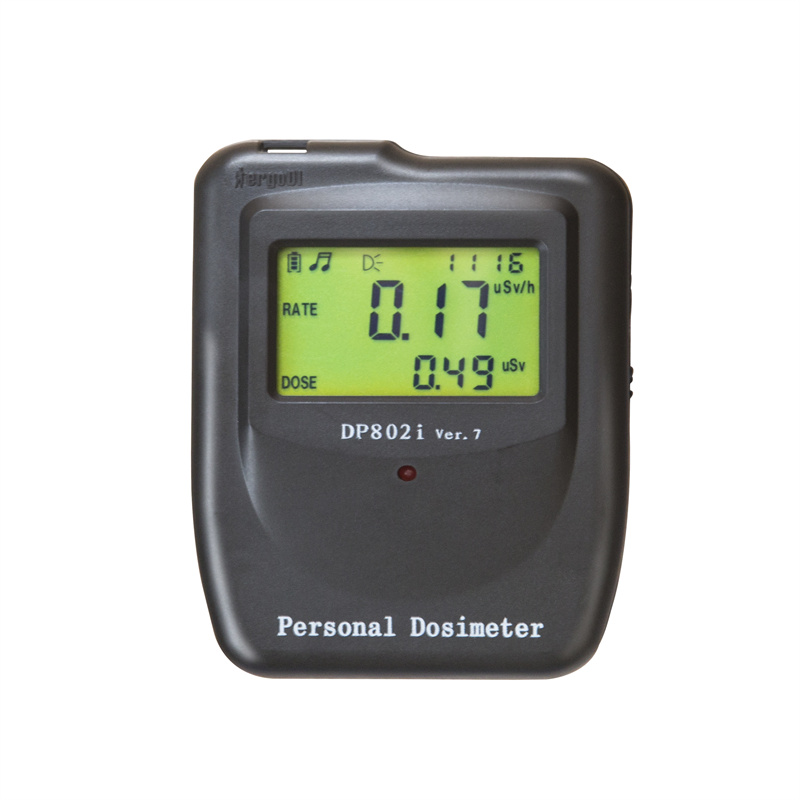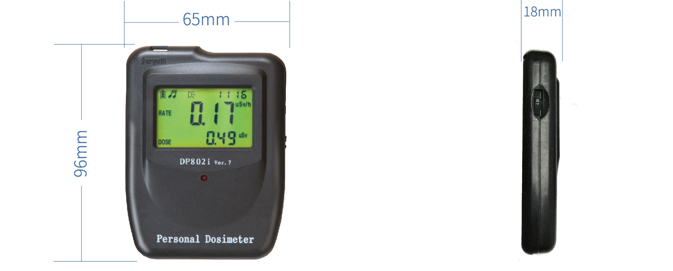A handheld radiation meter, also known as a handheld radiation detector, is a portable device used to measure and detect the presence of radiation in the surrounding environment. These devices are essential tools for professionals working in fields such as nuclear energy, healthcare, environmental monitoring, and emergency response, as well as for individuals concerned about potential radiation exposure.
So, how does a handheld radiation meter work? These devices operate based on the principles of radiation detection and measurement. There are several types of handheld radiation meters, each utilizing different technologies to detect and measure radiation. One common type is the Geiger-Muller (GM) detector, which consists of a gas-filled tube that produces an electrical pulse when radiation interacts with the gas molecules inside the tube. Another type is the scintillation detector, which uses a crystal that emits light when struck by radiation particles. Additionally, semiconductor detectors, such as those using silicon or germanium, are also used in handheld radiation meters.
When radiation interacts with the detector, it produces a signal that is then processed and displayed on the device's screen. The readings typically include the radiation dose rate, expressed in units such as microsieverts per hour (µSv/h), as well as the total accumulated dose over a period of time. Some advanced handheld radiation meters may also provide information about the type of radiation detected, such as alpha, beta, or gamma radiation.

In addition to detecting and measuring radiation, handheld radiation meters are designed to be user-friendly and portable. They are equipped with a variety of features to enhance their functionality and ease of use. Many models have a compact and lightweight design, making them easy to carry and operate in various settings. They often include a digital display that shows real-time radiation levels, as well as audible and visual alarms to alert the user to potentially hazardous radiation levels. Some devices also offer data logging capabilities, allowing users to record and analyze radiation measurements over time.
The applications of handheld radiation meters are diverse and wide-ranging. In the nuclear energy industry, these devices are used to monitor radiation levels in nuclear power plants, research facilities, and during the transportation of radioactive materials. In healthcare, they are employed to measure radiation exposure in medical imaging procedures and to ensure the safety of medical personnel and patients. Environmental monitoring agencies use handheld radiation meters to assess radiation levels in the environment, particularly in areas affected by nuclear accidents or radioactive contamination. Furthermore, emergency responders rely on these devices to assess radiation hazards during incidents such as industrial accidents, natural disasters, or acts of terrorism involving radioactive materials.

It is important to note that while handheld radiation meters are valuable tools for detecting and measuring radiation, they are not a substitute for proper radiation safety practices and protective measures. Users should receive training on the proper use of these devices and understand the limitations of handheld radiation meters in different radiation environments. Additionally, regular calibration and maintenance of the devices are essential to ensure accurate and reliable measurements.
In conclusion, handheld radiation meters play a crucial role in safeguarding against potential radiation hazards in various professional and personal settings. By utilizing advanced detection technologies and user-friendly features, these portable devices enable individuals and organizations to monitor and respond to radiation risks effectively. Understanding how handheld radiation meters work and their applications is essential for promoting radiation safety and protecting public health and the environment.
Post time: May-20-2024

